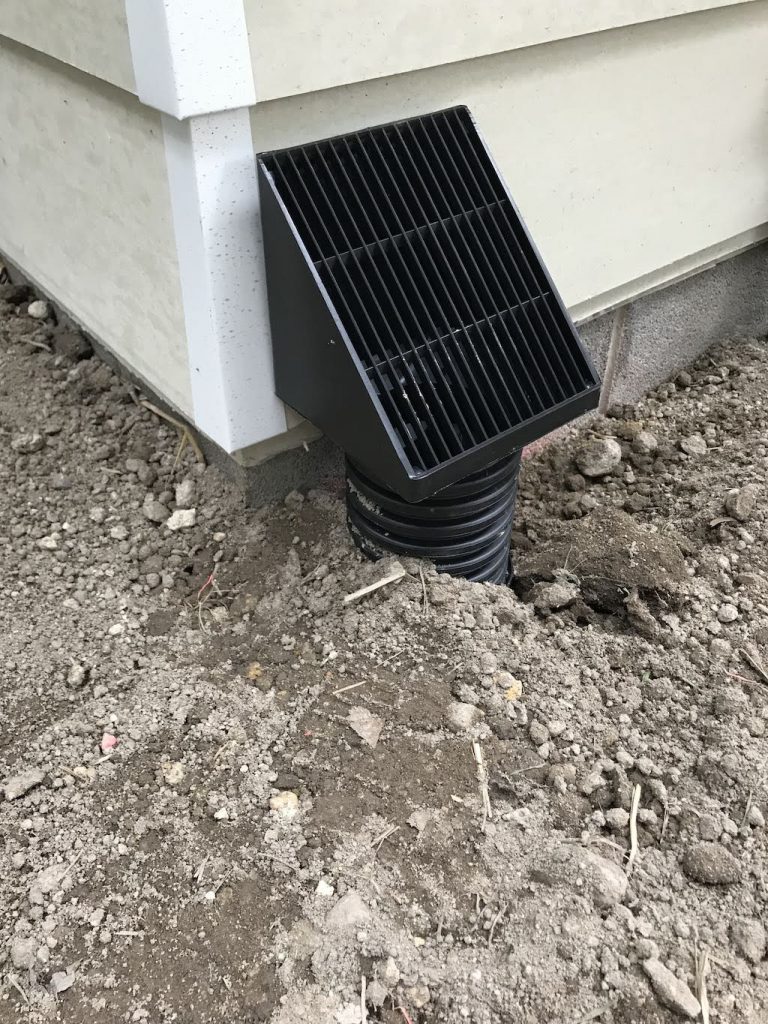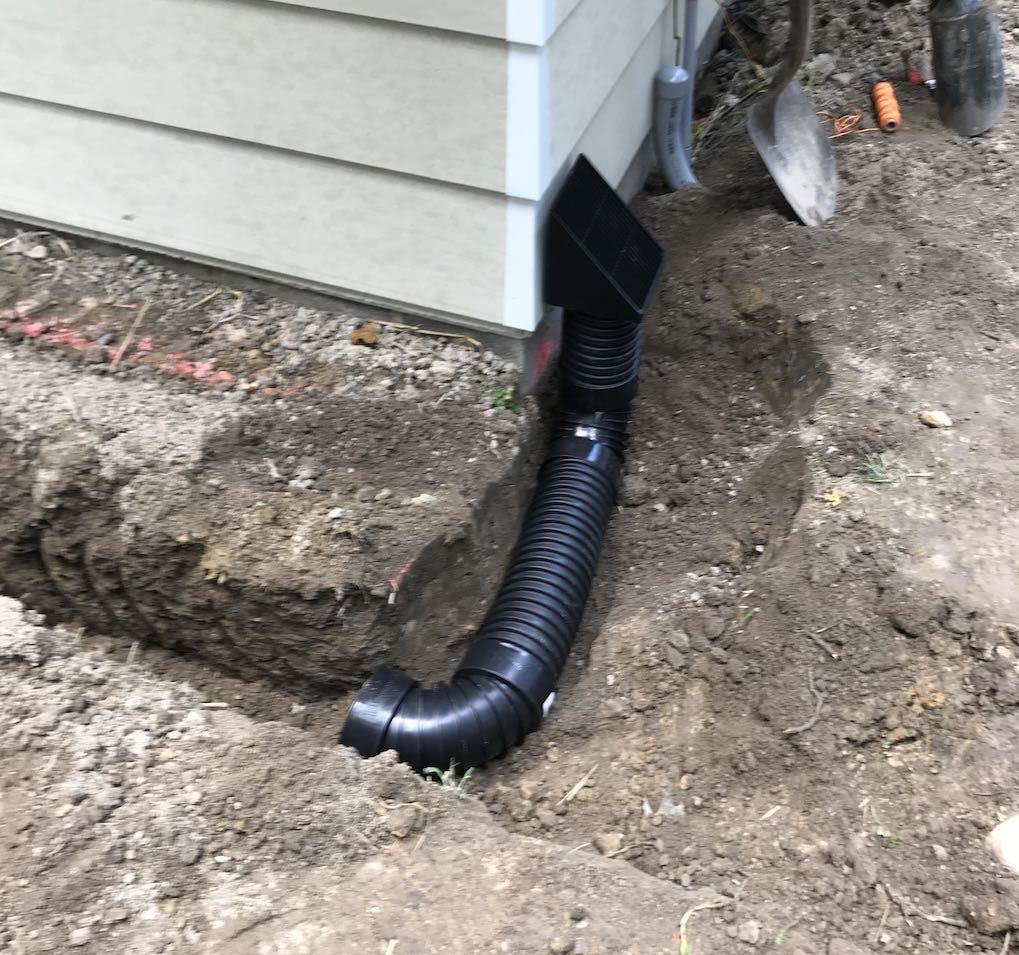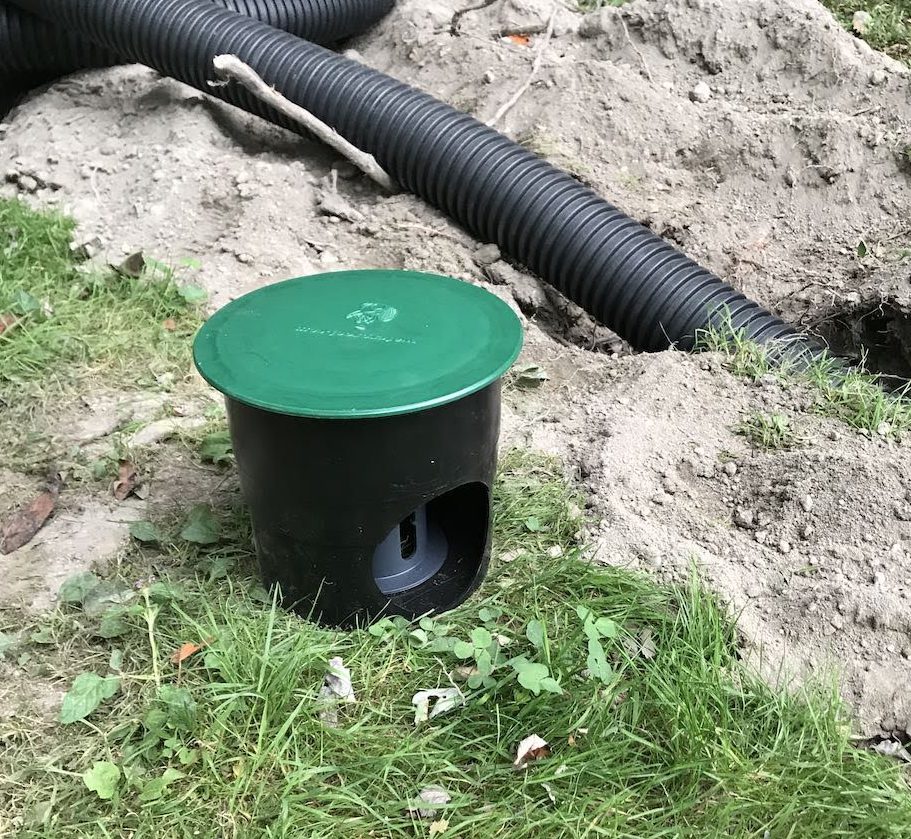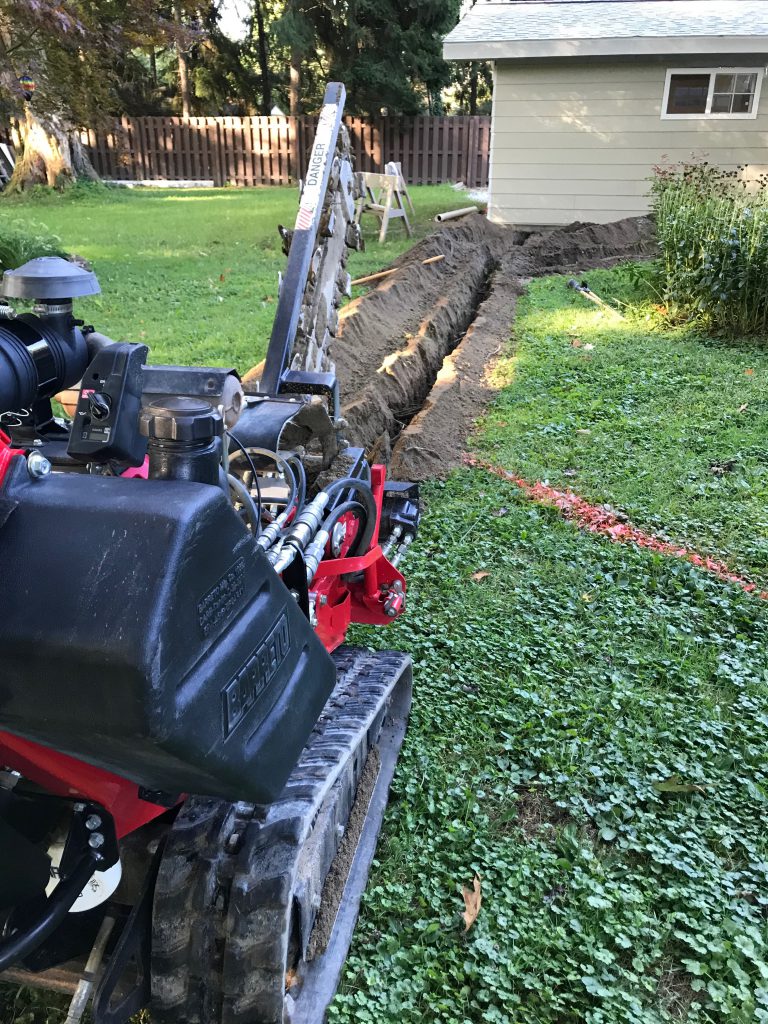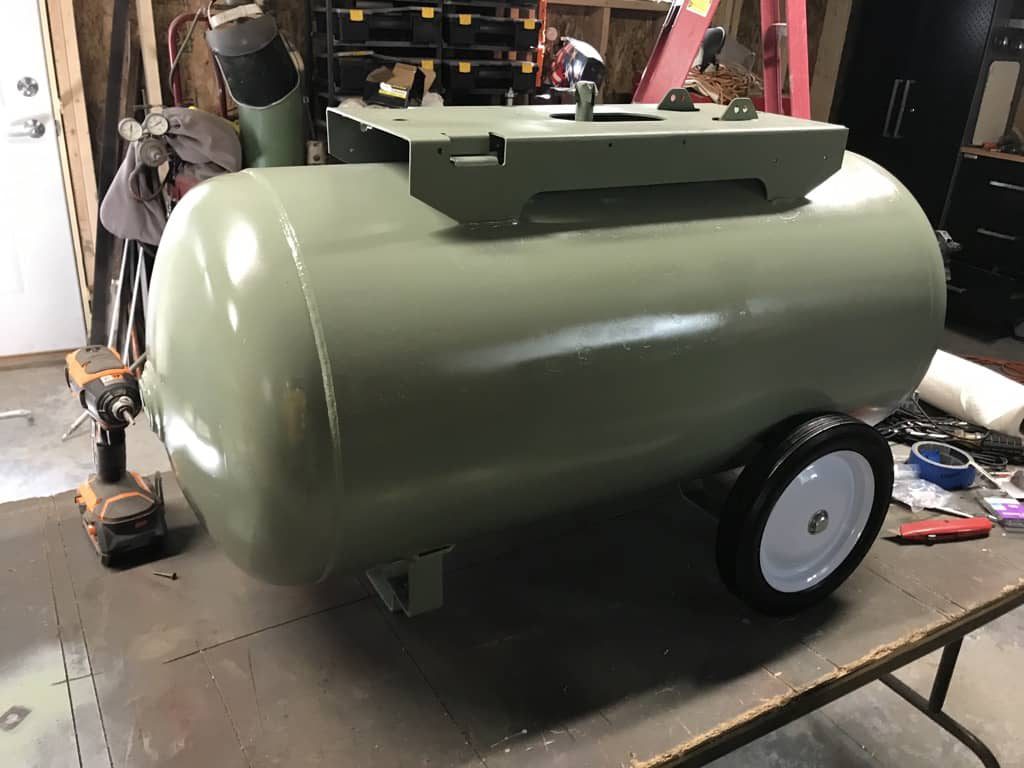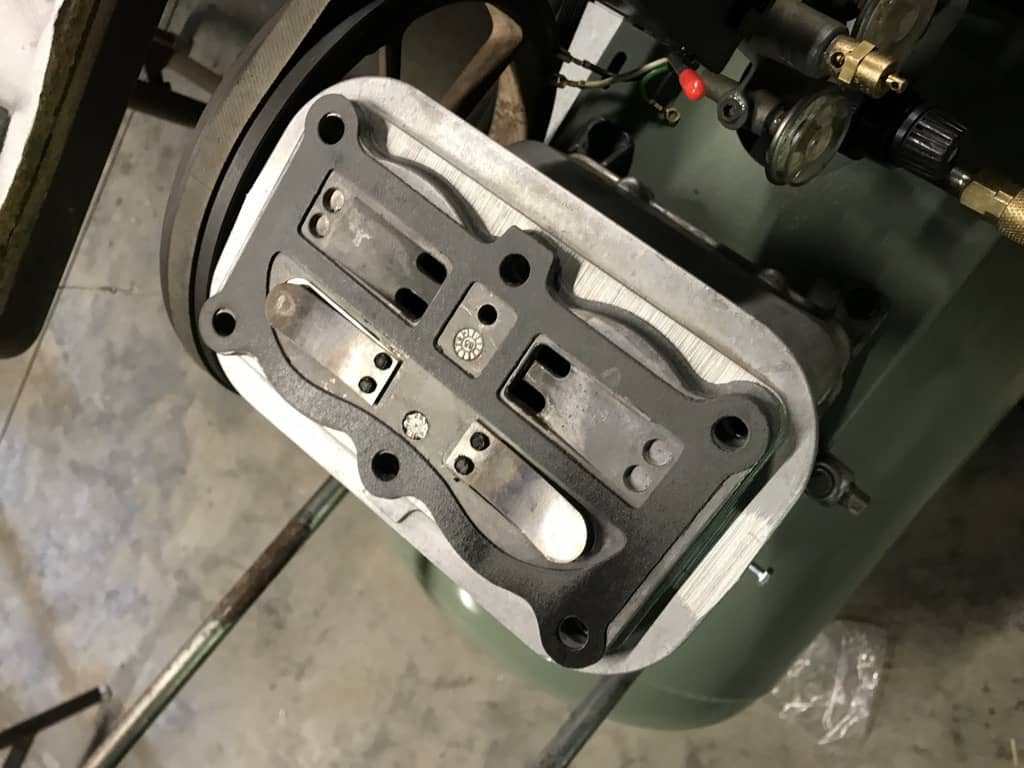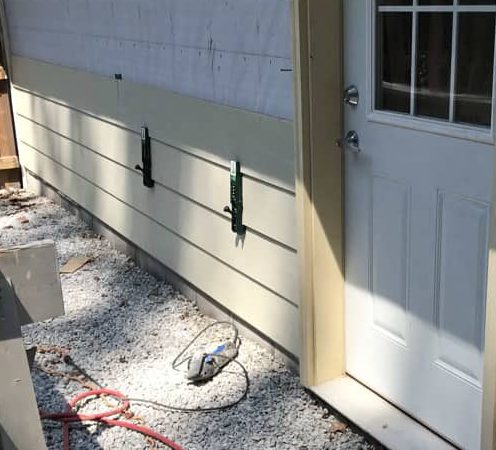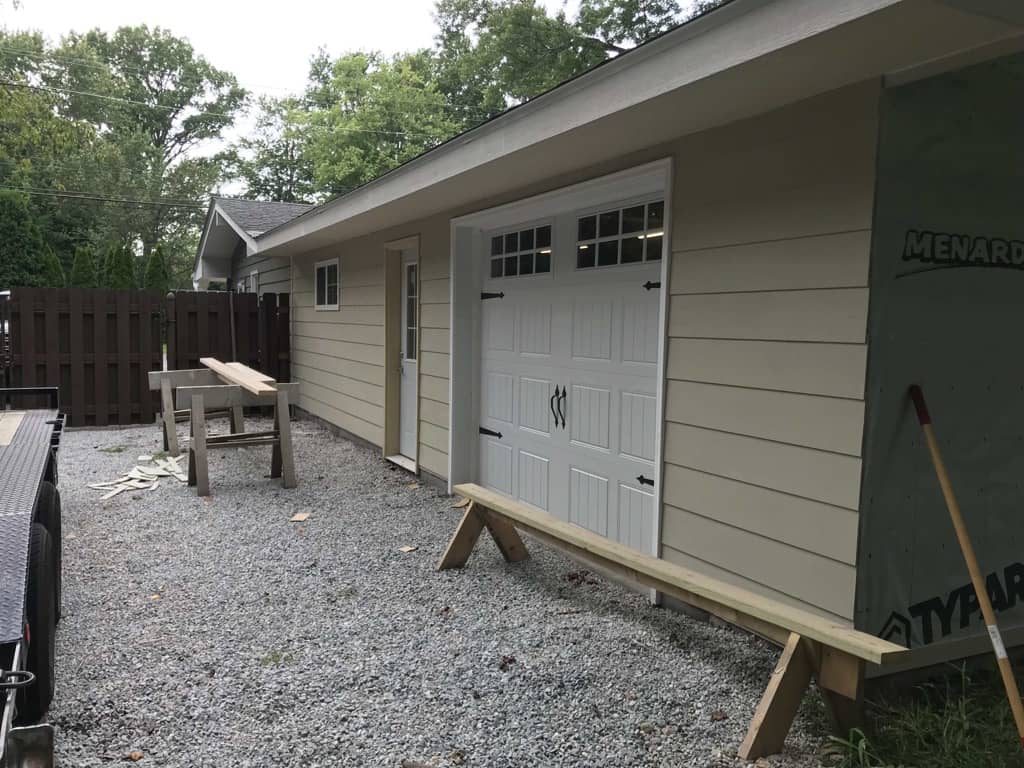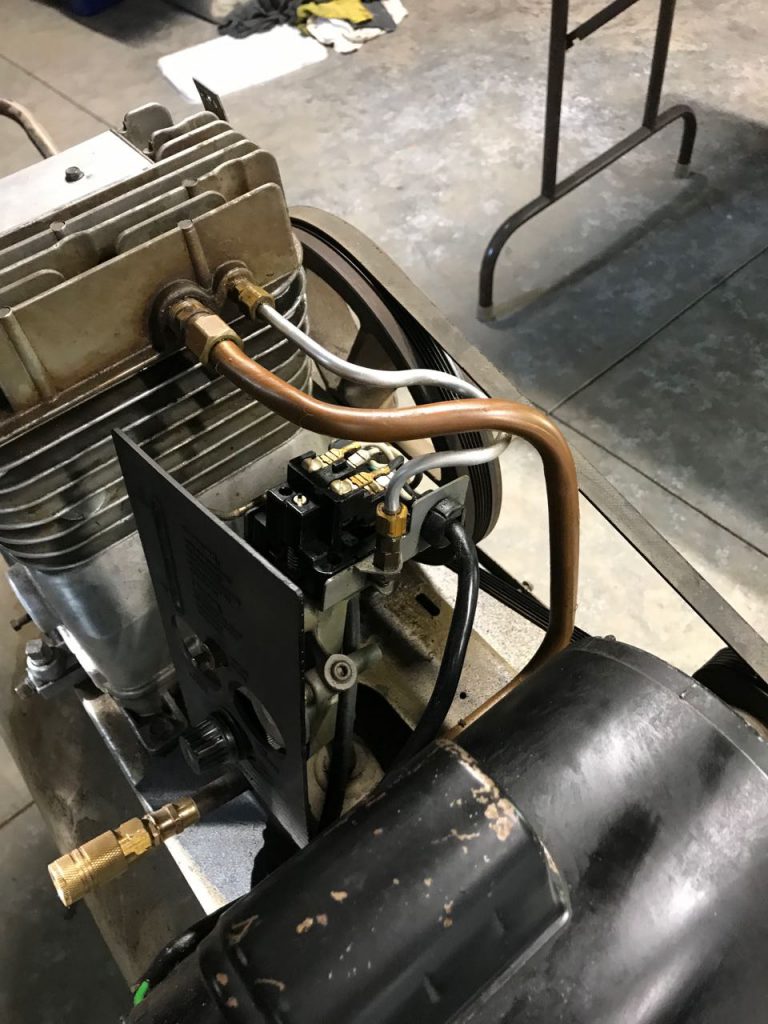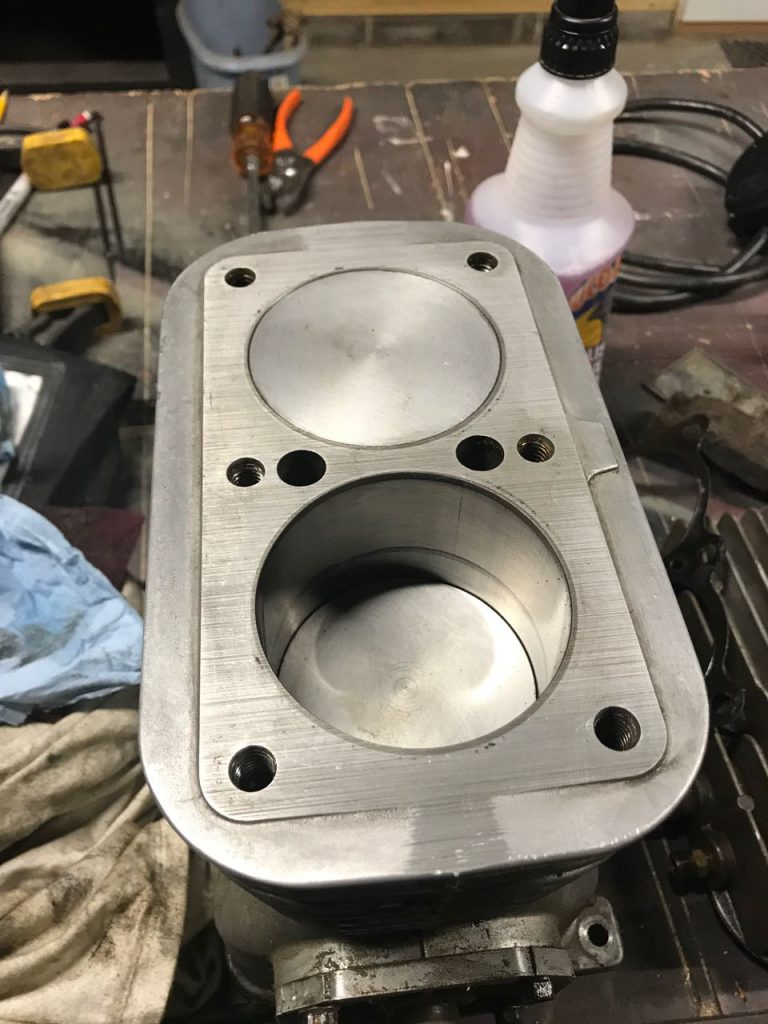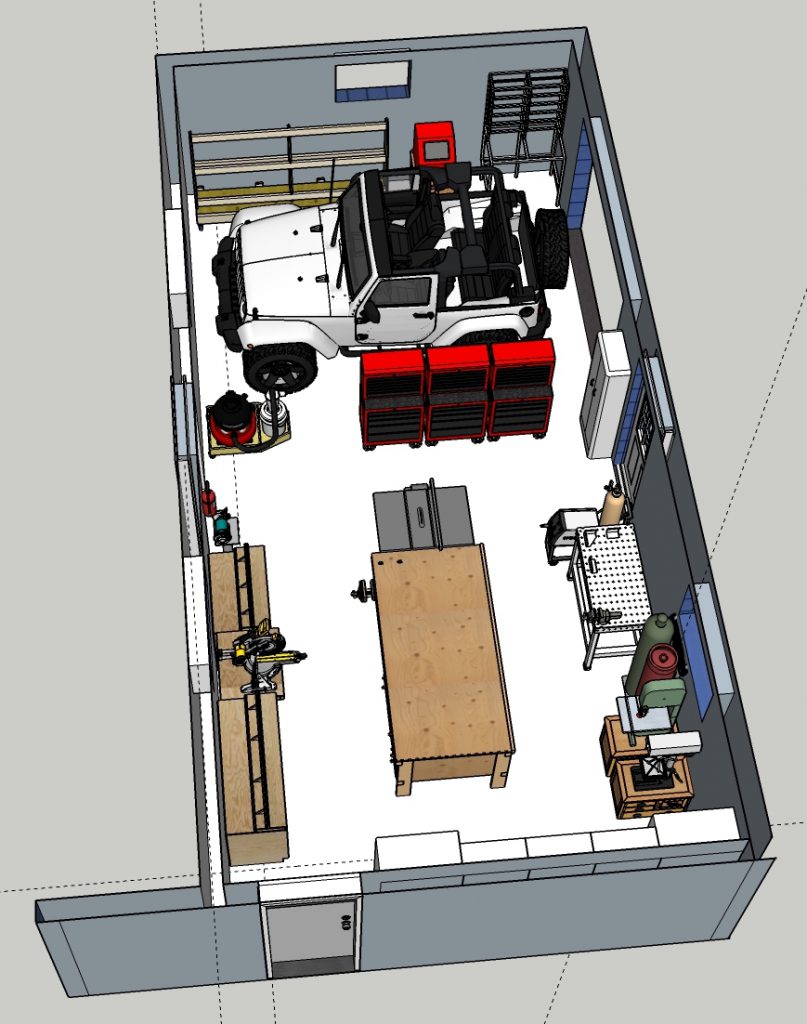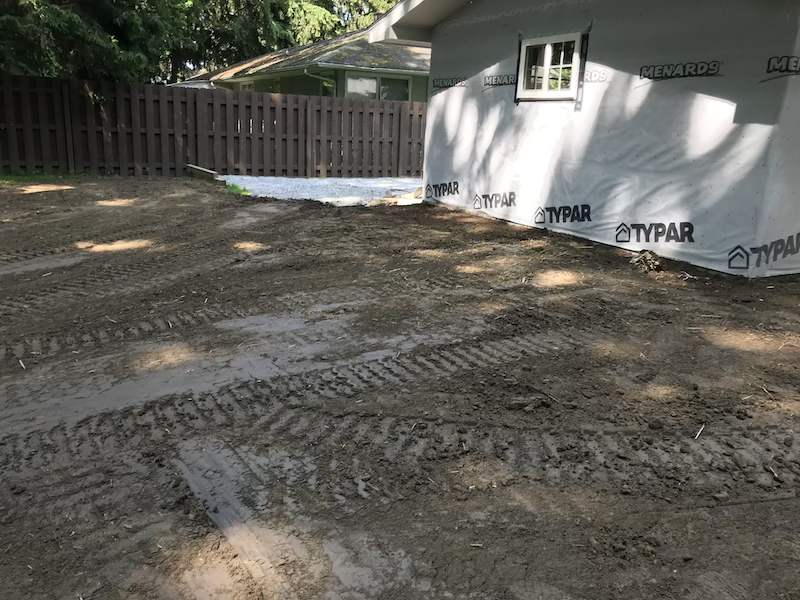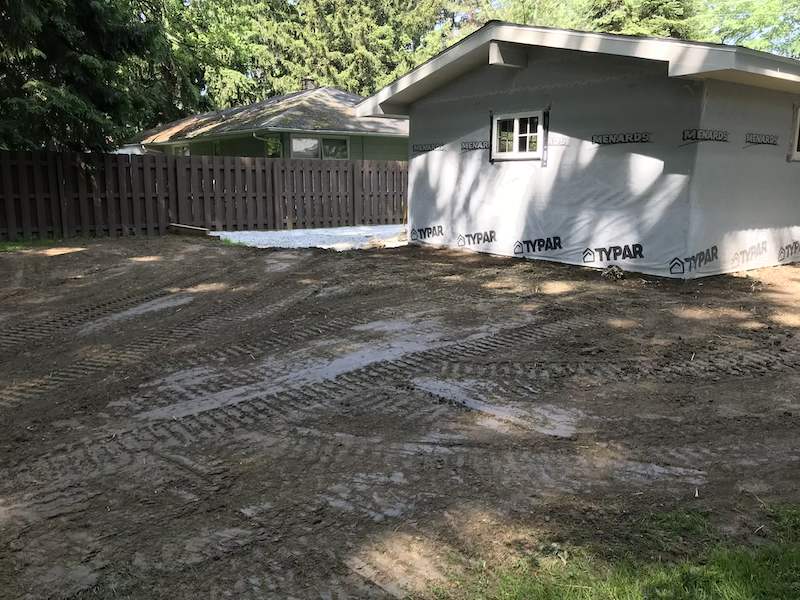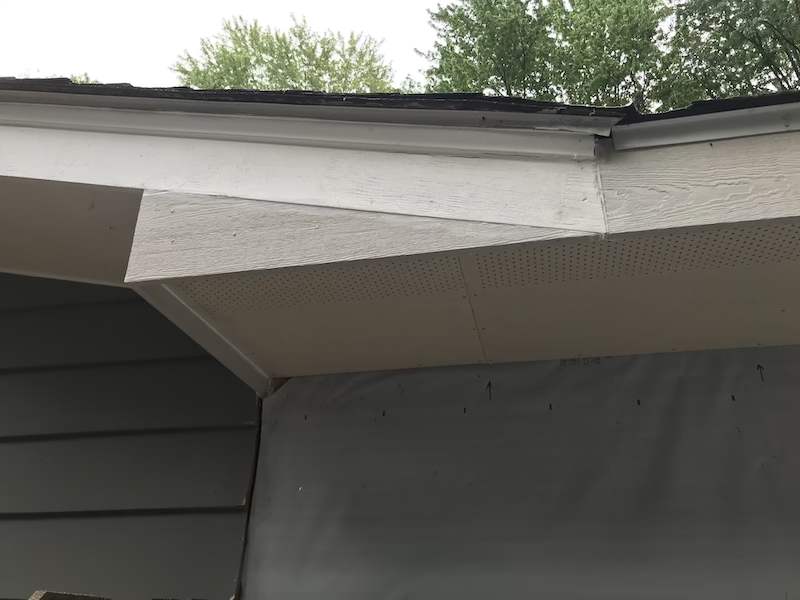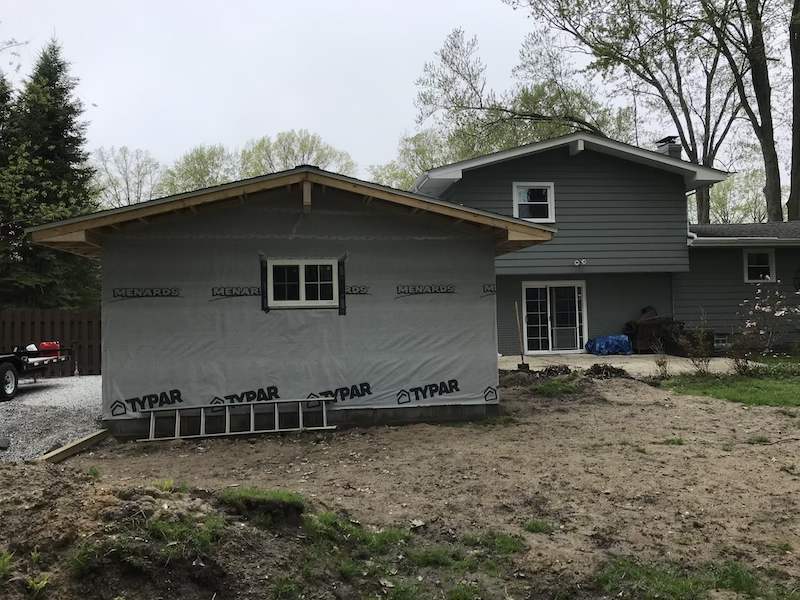One of the things about this house that I didn’t really like, is we don’t have storm drains for the downspouts. The rainwater just hits the ground and is diverted away from the side of the house. Not very effective. A while back, I installed these underground diverters on the house and wanted to add them to the shop as well.
The come in two parts, one, a collector that you place under the downspout. It has an angled face on it that screens the large leaves and such from the entering the drain. The second part is a popup that you place in your yard an appropriate distance from the structure. They work incredibly well and it was a no brainer for me to put these in.
I didn’t get the popup buried. I need to get a different connector to attach the drain line to it.

